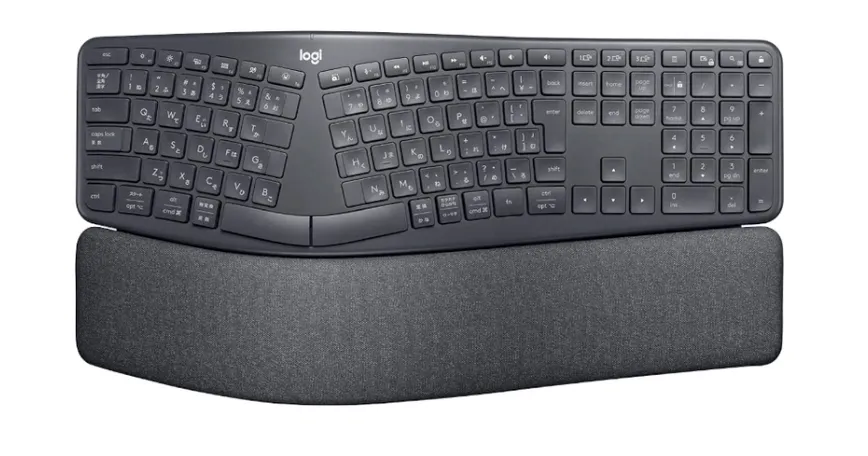
Advantages and disadvantages of ergonomic keyboards
Ergonomic keyboards are optimized for the human body using ergonomics. We summarize its advantages and disadvantages.
Modified at: 2023.2.7Posted at: 2022.9.27
What is an ergonomic keyboard?
A keyboard with an ergonomic design is called an "ergonomic keyboard".
The difference from a regular keyboard is the shape and layout of the keyboard. While a regular keyboard has a horizontal key layout, an ergonomic keyboard is laid out in a fan-like shape.
The key layout is the same as a regular keyboard, but the fan shape is achieved by curving the keys toward the center.
Benefits of Ergonomic Keyboards
The advantage of an ergonomic keyboard is that it places less strain on the body.
As you can see from the keyboard layout, the hands are not placed perpendicular to the keyboard body, but at an angle, which makes the form from the shoulders to the hands less physically demanding. This is actually a very comfortable form, and if you try it out and place your hands on the keyboard without thinking about it, you should get this ergonomic shape.
With a typical straight line design keyboard, you will be typing with your wrist bent at about a 45-degree angle in order to be right in front of the keyboard. This puts a strain on your wrists, elbows, and shoulders.
Ergonomic keyboards reduce these burdens, thereby reducing damage to the body.
Disadvantages of Ergonomic Keyboards
There are two disadvantages of ergonomic keyboards.
- large size
- need to learn the correct position
First, ergonomic keyboards are mainly full-size keyboards, and most of them have a rather large keyboard case design, so they require more desk space. Their large size also makes them unsuitable for mobile use.
Another disadvantage, the need to master the correct position, is more important.
Ergonomic keyboards are designed to be separated on both sides by a key next to the center position, so if the key fingerings are not correct, you will not be able to type the same way as usual.
For example, in correct key fingering, the "Y" key is typed with the right index finger, but some people may have a habit of typing with the left index or middle finger. On ergonomic keyboards with left-right separation, the "Y" key and the adjacent "T" key are about three keys apart, making typing with the left hand fingers much more difficult.
Therefore, if you are not typing with the correct key fingerings, an ergonomic keyboard may confuse your typing and make it difficult to type well or slow down your typing speed.
For those whose main job is key typing, typos and typing delays can be a hindrance to their work, so choose carefully.
How to choose an ergonomic keyboard
Ergonomic keyboards are quite a bit more quirky than regular keyboards. Therefore, be sure to try out an ergonomic keyboard before choosing one.
Many ergonomic keyboards are displayed at electronics retailers and PC stores, so try typing about 500 words on one and see if there is any discomfort or if you can use it with your fingertips without any problems.
There are many types of ergonomic keyboards, from low-profile keyboards with low keycaps to standard profile keyboards, with or without numeric keypad, etc., depending on the product, so be sure to touch the one that suits your style.